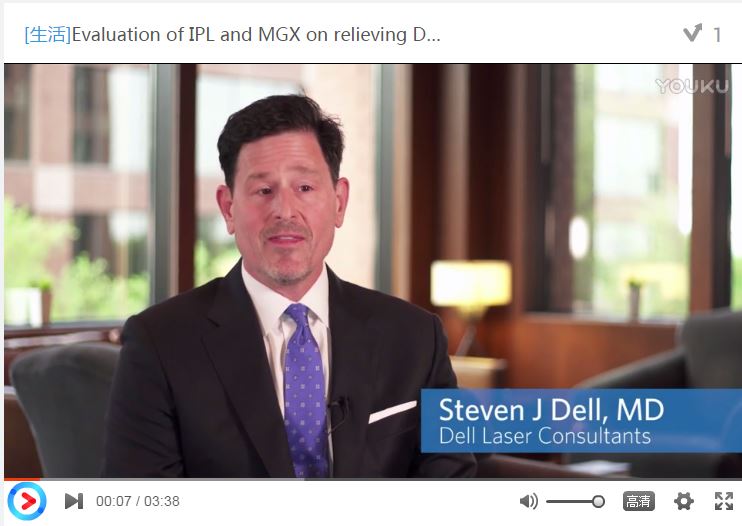9 0 5 7 8
论文已发表
注册即可获取德孚的最新动态
IF 收录期刊
- 2.6 Breast Cancer (Dove Med Press)
- 3.9 Clin Epidemiol
- 3.3 Cancer Manag Res
- 3.9 Infect Drug Resist
- 3.6 Clin Interv Aging
- 4.8 Drug Des Dev Ther
- 2.8 Int J Chronic Obstr
- 8.0 Int J Nanomed
- 2.3 Int J Women's Health
- 3.2 Neuropsych Dis Treat
- 4.0 OncoTargets Ther
- 2.2 Patient Prefer Adher
- 2.8 Ther Clin Risk Manag
- 2.7 J Pain Res
- 3.3 Diabet Metab Synd Ob
- 4.3 Psychol Res Behav Ma
- 3.4 Nat Sci Sleep
- 1.9 Pharmgenomics Pers Med
- 3.5 Risk Manag Healthc Policy
- 4.5 J Inflamm Res
- 2.3 Int J Gen Med
- 4.1 J Hepatocell Carcinoma
- 3.2 J Asthma Allergy
- 2.3 Clin Cosmet Investig Dermatol
- 3.3 J Multidiscip Healthc

Prospective evaluation of intense pulsed light and meibomian gland expression efficacy on relieving signs and symptoms of dry eye disease due to meibomian gland dysfunction
Authors Dell SJ, Gaster RN, Barbarino SC, Cunningham DN
Received 20 December 2016
Accepted for publication 9 February 2017
Published 2 May 2017 Volume 2017:11 Pages 817—827
DOI https://doi.org/10.2147/OPTH.S130706
Checked for plagiarism Yes
Review by Single-blind
Peer reviewers approved by Dr Colin Mak
Peer reviewer comments 3
Editor who approved publication: Dr Scott Fraser
Purpose: The aim of this study was to estimate the efficacy of intense pulsed
light (IPL), followed by meibomian gland expression (MGX), for reducing the
number and severity of signs and symptoms of dry eye disease (DED) secondary to
meibomian gland dysfunction (MGD).
Patients and methods: In a prospective study conducted in
two sites, 40 subjects (80 eyes) with moderate to severe MGD were enrolled.
Major inclusion criteria consisted of at least two of the following measures
being compatible with DED in both eyes: tear breakup time (TBUT), meibomian
gland score (MGS), corneal fluorescein staining (CFS), Standard Patient
Evaluation of Eye Dryness (SPEED) questionnaire, and tear film osmolarity
(TFO). Enrolled patients underwent four treatment sessions, 3 weeks apart.
Each treatment included the administration of 10–15 pulses of IPL on the cheeks
and nose, followed by MGX of the upper and lower eyelids. TBUT, MGS, CFS,
SPEED, TFO, and lipid layer thickness (LLT) were measured at baseline (BL) and
at 9, 12, and 15 weeks after BL.
Results: Due to different staining methods used for TBUT
measurements, TBUT and CFS were analyzed separately for each site. From BL to
the final follow-up, the number of signs compatible with DED decreased from
3.3±0.1 to 1.4±0.1. TBUT improved by +93% (n=38; P <0.0001) and +425%
(n=42; P <0.0001) for sites 1 and 2,
respectively. SPEED, MGS, and CFS improved by -55% (n=80; P <0.0001), -36% (n=80; P <0.0001), and
-58% (n=38; P <0.0001), respectively. In 20
eyes with abnormally elevated TFO at BL, TFO improved by -7% (n=20; P <0.005). LLT
did not change (n=38; P =0.88).
Conclusion: In subjects with moderate
to severe MGD, IPL combined with MGX reduced the number and severity of
symptoms and signs of DED. Except for LLT, all examined outcome measures significantly
improved after 15 weeks. These results support the efficacy of IPL + MGX
in relieving both signs and symptoms of DED secondary to MGD.
Keywords: dry
eye, meibomian gland dysfunction, intense pulsed light
摘要视频链接:Evaluation of IPLand MGX on
relieving DED signs and symptoms
